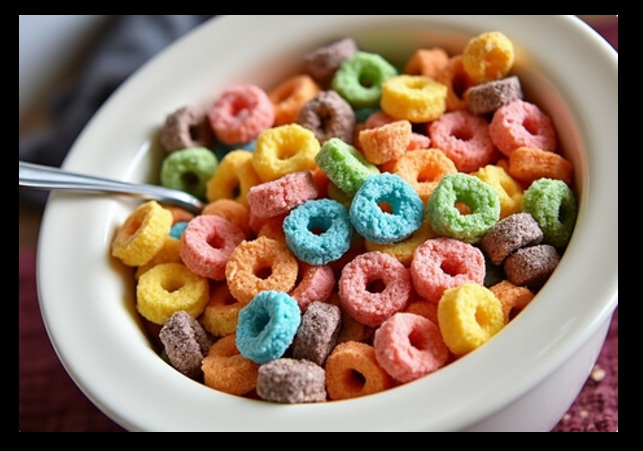The New York Times Accidentally Admits RFK Jr. is Correct on Food Additives

When I said Robert F. Kennedy, Jr. could be the most effective agent for change that President-elect Donald Trump has nominated, I also noted that the elite media would work hard to derail the nomination for the post of Secretary of Health and Human Services.Of course, the first and most pompous smears come from The New York Times.However, a strange thing happened during this particular attempt to undermine the candidate.The progressive publication accidentally endorsed Trump’s pick when it mocked Kennedy’s stance on additives in American food.
Mr. Kennedy has singled out Froot Loops as an example of a product with too many ingredients. In an interview with MSNBC on Nov. 6, he questioned the overall ingredient count: “Why do we have Froot Loops in this country that have 18 or 19 ingredients and you go to Canada and it has two or three?” Mr. Kennedy asked.He was wrong on the ingredient count, they are roughly the same. But the Canadian version does have natural colorings made from blueberries and carrots while the U.S. product contains red dye 40, yellow 5 and blue 1 as well as Butylated hydroxytoluene, or BHT, a lab-made chemical that is used “for freshness,” according to the ingredient label.
So, in other words, Kennedy was completely correct in his assessment.
The social media fact-checking of The New York Times was tasty.
“Wait, so RFK Jr. was completely accurate, but they didn’t like how he said it?” wrote an incredulous X user.Another person quipped, “They are the same, only different, right? that is logical… Sure it is.”An X writer, referring to Trump’s decisive election victory over Vice President Kamala Harris, said, “This. This is exactly why they lost. Everything about this particular part of this specific article is why we won and they lost.”
Now, I would like to look at the science that The New York Times failed to do.
Red Dye 40, also known as Allura Red AC, has been associated with several potential adverse health effects, including DNA damage and colon inflammation in mice in one study. Some studies suggest that Red Dye 40 may increase hyperactivity and exacerbate symptoms of Attention Deficit Hyperactivity Disorder (ADHD) in children.
Among other complications, studies say red dye 40 may increase risks for ADHD in children. Notably, a 2015 report by the Journal of the American Academy of Children and Adolescent Psychiatry estimated about 8% of children with ADHD may have symptoms related to synthetic food colors.This research is inconclusive, however, and not all institutions back it up (hint: the FDA). According to a 2019 review by the FDA, a causal link between consuming red food dye and developing ADHD had not been established.“The FDA has not formally noted a connection between red dye and ADHD in children, but there is some data to point towards a possible connection,” says allergist and immunologist Dr. Farah Khan, who is with the Nationwide Children’s Hospital in Columbus, Ohio. “We’re still learning about food additives and in the world of allergy and immunology, we don’t have any validated way to test for the behavioral concerns that arise.”
Blue 1 Dye is also known as Brilliant Blue FCF or FD&C Blue No. 1. Based on animal testing, this compound may have neurotoxic effects and potentially impact neurodevelopment. Concerns about its ability to cross the blood-brain barrier have led to investigations of its possible link to hyperactivity and attention issues in children.
Yellow 5 Dye can cause allergic reactions in some individuals, particularly those sensitive to aspirin.
A case study published in the June 2006 issue of “Allergology International,” reported multiple chemical sensitivities in a 5-year-old girl. Colorful sweets such as candies and jellybeans triggered her symptoms. Researchers discovered the patient had a sensitivity to nonsteroidal anti-inflammatory drugs, such as aspirin, and tartrazine, an azo dye.
Butylated hydroxytoluene (BHT) is used as a preservative and as a way to maintain freshness. A safety summary from New Jersey indicates there is limited evidence that 2,6-Di-tert-Butyl-p-Cresol causes cancer in animals. (i.e., animal studies suggest it may cause lung, brain and liver effects) a may damage the developing fetus. This evidence, collected through the 1970’s-1990’s proved inconclusive, but several countries are putting restrictions on its use.
Interestingly, California is mandating the removal of the three dyes listed above (along with several others) from foods sold in schools.
The law puts food manufacturers on notice that they have until the end of 2027 to purge the offending ingredients from their products, which include dyes like Red 40, Yellow 6, Yellow 5, Blue 2, Blue 1 and Green 3.Those who fail to comply risk their foods being banned from public school vending machines and cafeterias in more than 12,000 Golden State schools.“Today, we are refusing to accept the status quo, and making it possible for everyone, including school kids, to access nutritious, delicious food without harmful, and often addictive additives,” Newsom said lauding the legislation.
America has both an obesity problem as well as a chronic disease epidemic. We have watched “experts” push “science” that suits narratives, lobbying efforts, and politically connected firms.
Looking at the data, perhaps it is time for a team assembled by someone not beholden to special interests review the Generally Recognized as Safe ratings that have been issued by the FDA. After all, if Canada is using natural food colorings, why can’t we?
It’s not to say the dyes and preservatives need to be eliminated. But it would be great if Kennedy could have his team reevaluate and inform. That way, we can all make the right food decisions for us and our families.
Now it appears that the papers has a few regrets publishing this flawed fact-check.
CLICK HERE FOR FULL VERSION OF THIS STORY